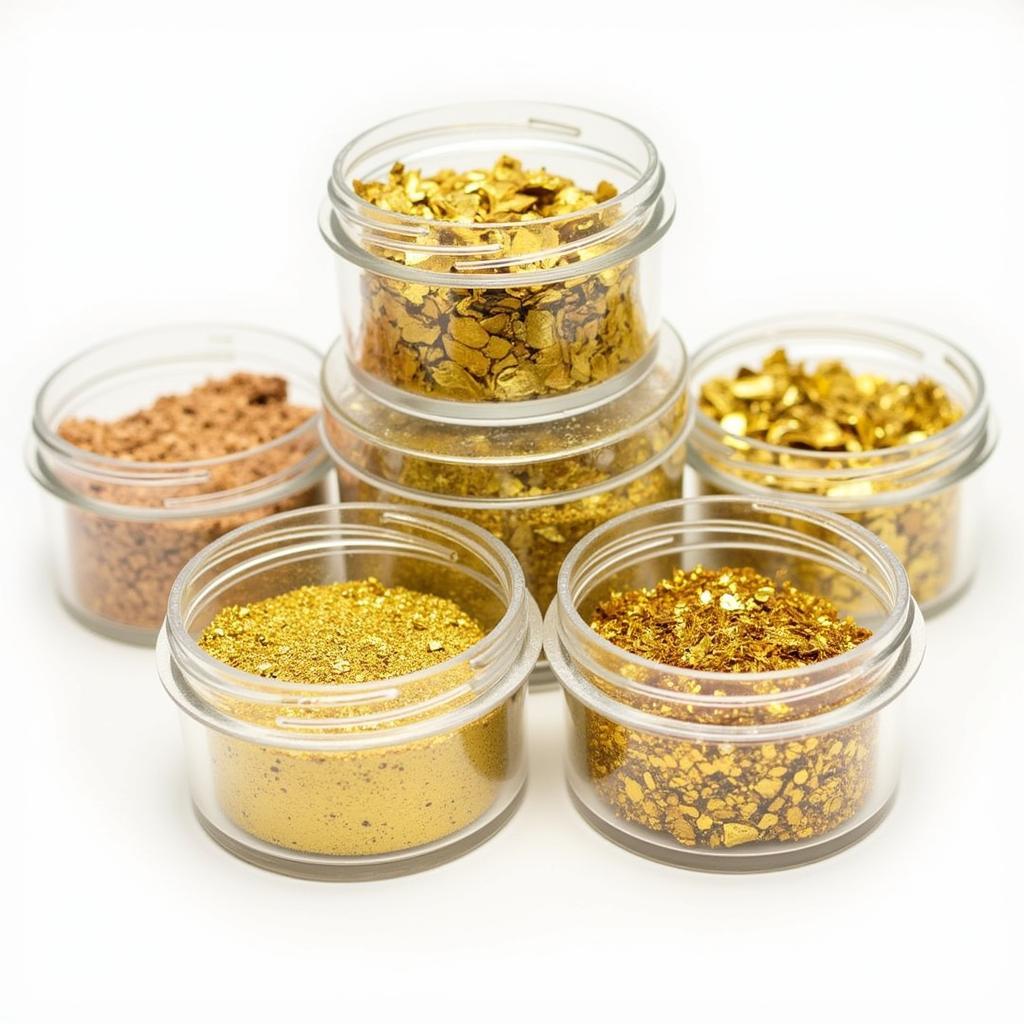Gold, a symbol of luxury and grandeur, has transcended its traditional boundaries and found its way into the culinary world. Gold Food Color, whether in the form of shimmering dust, lustrous flakes, or vibrant liquid, has become increasingly popular, adding a touch of opulence and sophistication to various dishes. But what exactly is gold food color, and how did it become such a coveted ingredient in modern gastronomy?
A Glimpse into the History of Edible Gold
The use of gold in food dates back centuries, with origins tracing back to ancient civilizations like Egypt, Rome, and India. Gold was believed to possess mystical and medicinal properties and was often consumed by royalty as a symbol of power and eternal life. In medieval Europe, alchemists experimented with edible gold, believing it held the key to longevity and vitality. While those beliefs have been debunked by modern science, the tradition of incorporating gold into food has persisted, evolving from a status symbol into a culinary art form.
The Science Behind Gold’s Edibility
Gold, in its purest form (24-karat), is chemically inert, meaning it doesn’t react with other substances in our body. This characteristic makes it safe for consumption, passing through the digestive system without being absorbed. However, not all that glitters is edible gold. Only gold classified as “E175” is certified safe for consumption. This designation ensures the gold is pure and free from impurities that could be harmful.
 Various Forms of Edible Gold for Culinary Use
Various Forms of Edible Gold for Culinary Use
Different Strokes for Different Folks: Types of Gold Food Color
The market offers a variety of gold food colors, each catering to specific culinary needs:
- Gold Leaf: The most delicate and expensive form, gold leaf, is best for applying to smooth, firm surfaces like chocolates, cakes, and fondant.
- Gold Dust: Versatile and easy to use, gold dust adds a subtle shimmer and can be sprinkled onto desserts, beverages, and savory dishes.
- Gold Flakes: Larger than dust, gold flakes offer a more pronounced texture and sparkle, ideal for decorating cakes, cupcakes, and cocktails.
Gilding Your Culinary Creations: Tips and Tricks
Incorporating gold food color requires a gentle touch and attention to detail:
- Surface Matters: Gold adheres best to dry, non-sticky surfaces.
- Tools of the Trade: Use a dry, soft-bristled brush or a pair of tweezers for precise application.
- Less is More: Start with a small amount and gradually add more to achieve the desired effect.
Gold Food Color: A Feast for the Eyes and a Conversation Starter
Beyond its aesthetic appeal, gold food color possesses a unique ability to transform ordinary dishes into extraordinary experiences. It elevates desserts to new heights of luxury, adds a touch of whimsy to cocktails, and creates a sense of occasion for any meal. So, the next time you want to impress your guests or simply indulge in a bit of culinary extravagance, consider adding a touch of gold.
FAQ
1. Is gold food color safe for children?
Yes, gold classified as “E175” is safe for consumption by people of all ages.
2. What is the shelf life of gold food color?
Gold food color has an indefinite shelf life if stored properly in a cool, dry place.
3. Can I use gold food color in savory dishes?
Absolutely! Gold can add a touch of elegance to savory dishes like risotto, sushi, and appetizers.
4. Does gold food color have any taste?
Gold is flavorless and odorless, meaning it won’t alter the taste of your dish.
5. Where can I buy gold food color?
You can find gold food color online, in specialty baking stores, or at some gourmet food retailers.
For more information or assistance with your culinary creations, our dedicated customer support team at Mina Cones Food is available 24/7. Contact us at Phone Number: 02437655121, Email: minacones@gmail.com or visit us at 3PGH+8R9, ĐT70A, thôn Trung, Bắc Từ Liêm, Hà Nội, Việt Nam.